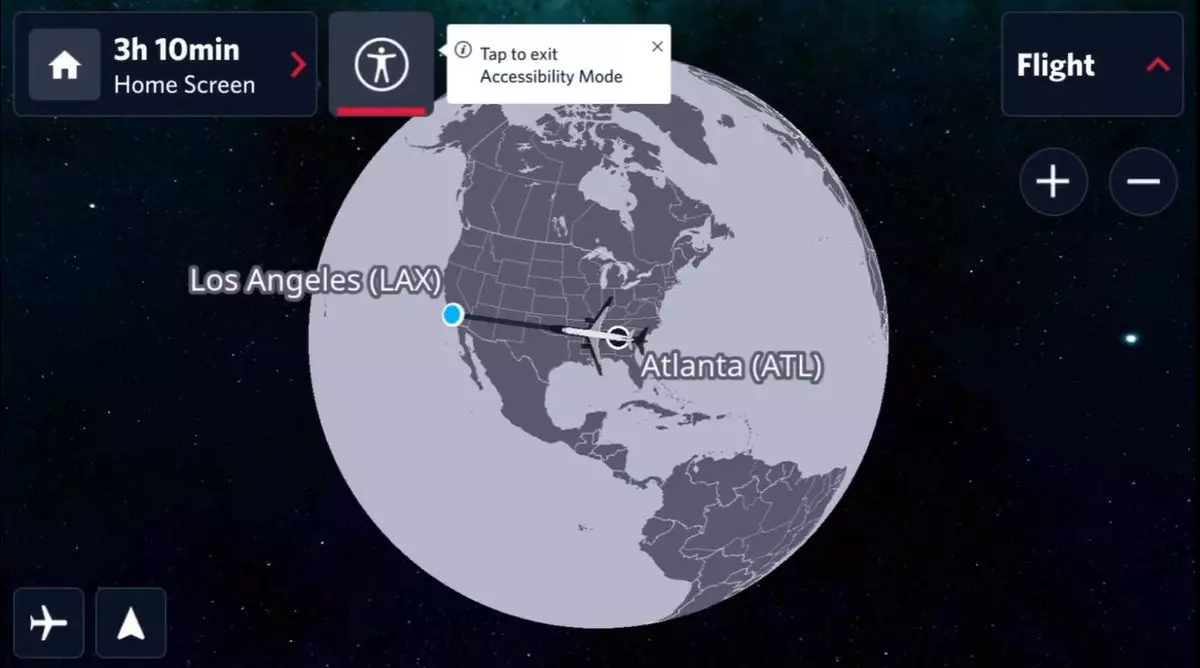Delta Air Lines has taken a significant step forward in enhancing travel accessibility by launching an innovative flight map specifically tailored for visually impaired passengers. This groundbreaking feature is currently operational on 171 aircraft, with plans to fully integrate it across over 600 planes by the holiday season, as revealed by Ekrem Dimbiloglu, the airline’s managing director of customer experience. The initiative not only underscores Delta’s commitment to inclusivity but also highlights an industry-wide push towards improved services for passengers with disabilities.
The Essential Nature of the Flight Map Feature
The introduction of this accessible flight map is particularly noteworthy, given that nearly half of Delta’s passengers engage with the flight tracking feature during their journey. More impressively, about 20% of travelers rely solely on the flight map, making it a vital component of the in-flight experience. Dimbiloglu emphasized that the airline is striving to create an environment where all travelers feel included and empowered. By addressing the needs of visually impaired individuals, Delta demonstrates a proactive approach to equity in travel experiences.
The accessible map is designed with user-friendliness in mind, providing a simplified interface that reduces visual clutter. Compared to the standard map, the accessible version displays fewer cities and geographic details, making navigation easier for individuals with visual impairments. Additionally, it features larger fonts, high-contrast color schemes, and enhanced icons. Currently, Delta is working on incorporating a voice narration element, which is expected to debut in the coming year. This enhancement will further broaden the usability of the flight map, reaffirming Delta’s commitment to making air travel more inclusive.
Collaborative Development Process
The development of this accessible flight map was a collaborative effort involving insights from both Delta and FlightPath3D, the application’s developer. After reviewing a prototype presented by FlightPath3D earlier this year, Delta enlisted the assistance of its Advisory Board on Disability, which comprised knowledgeable individuals who provided valuable feedback on refinements. Remarkably, this initiative progressed from concept to implementation in just 13 months, a notable achievement in the notoriously lengthy airline industry.
Both Dimbiloglu and Duncan Jackson, president of FlightPath3D, expressed hope that this initiative would inspire other airlines to adopt similar accessibility-focused technologies. Dimbiloglu pointed out that ticket sales should not be the only metric for decision-making; the ethical responsibility to create inclusive travel experiences must take precedence. Jackson echoed this sentiment, emphasizing that with around 400 million travelers using the standard FlightPath3D product annually, the demand for an accessible map is both a moral and practical necessity.
Delta Air Lines’ introduction of an accessible flight map marks a crucial advancement in the airline industry. By prioritizing the needs of visually impaired passengers, Delta not only enriches the travel experience for a significant portion of its clientele but also sets an example for its peers. With ongoing innovations and collaborative approaches, the potential for a more inclusive aviation sector is promising, suggesting that the future of air travel could be more accommodating than ever before.


Napsat komentář